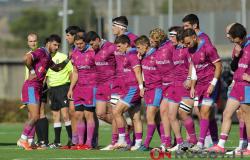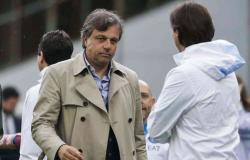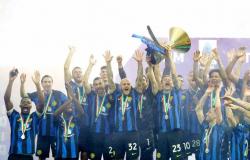One week after the vote for the renewal of the top elective offices of the municipality of Gela, the largest city among those involved in this electoral round relating to the administrative elections on the island, we thought we would take a look at the programs presented by the five candidates for the office of mayor.
Programs attached to the supporting lists, containing the candidates for the city council, filed within the established deadlines.
Let’s start with the candidate who chronologically last presented his program “de visu” to the city, doing so directly from the electoral committee very close to Piazza Umberto I, namely Filippo Franzone. In over twenty pages, 22 points and a series of sub-points are listed, thus arriving at around ninety objectives, all achievable – according to the optimistic Franzone – within the five mandates.
Certainly, as announced at the beginning of the electoral campaign, there are many points suggested by the citizens met. But there are also different points, obviously updated, that we read five years ago in Lucio Greco’s extensive program. If, as expected, the “passage to Catania” is the first in order of priority, due to the battles waged in the area, it is a bit jarring to have relegated “healthcare” practically to the rear, to the nineteenth point (out of the twenty-two total) .
The record, however, for the longest programmatic document undoubtedly goes to the candidate of the civically rebellious center-right, called “Alliance for Gela”, Totò Scerra. 32 pages in total. In the paper, in reality, we read a long premise and the choice to group the various objectives into 6 large macro-areas: “city administration” (municipal organization and city safety); «a city that moves» (mobility; economic development; trade and new entrepreneurship; valorisation of cultural heritage; agriculture); «a city of solidarity» (family; disability and protection of vulnerable groups; health services; elderly people); «a beautiful and healthy city» (environment; waste; culture, tourism and sport); «a city that educates» (education); «a city for young people» (gathering spaces; policies for teenagers; school welfare; volunteering).
The candidate of the broad progressive camp, Terenziano Di Stefano, also presented his “Gela Plan” for 9 macro-areas: “the city of services” (better specified in a further 8 points); «the city of culture and knowledge, young people and welfare» (better specified in a further 14 points); «the city that moves» (better specified in a further 13 points); «the city of the future» (better specified in a further 8 points, all on planning); «the city of the environment and a safe quality of life» (better specified in a further 22 points); «the city of health» (better specified in a further 25 points);
«the city of neighborhoods» (better specified in a further 6 points); “the city that produces” (better specified in a further 16 points) and “the city and its budget” (better specified in a further 4 points). In total, well over a hundred objectives (almost 110) were set, supplemented by 9 “battles of the mayor and his council”: hospital; watermaker; Gela ring road; completion of the Gela-Syracuse motorway; port; dune and behind-dune recovery of the Gelese coast; dams; revision of the 2014 memorandum of understanding; industrial yard.
There are around ten points listed by the first woman candidate for the office of mayor of Gela, the engineer. Grazia Cosentino, head of the “official” center-right of the parties (and related symbols). The 10 basic points are: «safety»; «cleanliness and public order»; «economic development and financial recovery»; «tourism and valorization of cultural heritage»; «social policies»; «support for young people and professional growth»; «industry and port»; «spaces for culture, common goods and urban regeneration»; «health and social services»; “agriculture”; «public infrastructures»; “sport”.
Here too there are various sub-points to the point of almost fifty clear objectives. But there is more. An ambitious plan “aimed at overturning the sectoral planning theorem of the past”. A reform “master plan” that develops along four macro-areas of intervention, referring to the same number of respective departments of the “new” municipal machine: the “ecological transition department”; the «socio-cultural department»; the «administrative department» and the «economic department». A reorganization that concerns in particular the first two departments mentioned above.
Finally, we close with Miguel Donegani and his political laboratory “Per”. The tracks exposed in the program resulting from the political school that the laboratory has developed over the past months are just over ten: “health and social services”; “economical progress”; “agriculture”; “school”; “sport”; «cemeteries»; «water and waste»; “industry”; “tourism”; “culture”; «Roccazzelle, Borgo Manfria, Manfria and Piana marina». Also in this case there are sub-points, but compared to the other candidates, the choice to explain the points of the program to citizens through “hosted” appearances on talk shows and in local political forums, as well as through careful use of social media, is clearer and more peremptory. through posts and videos uploaded to all digital platforms.
Not that the others don’t do it, but in Donegani’s case the approach is more marked and not at all hidden. Moreover, it is also a choice imposed by having only one list in support, a civic one at that, and it is therefore the undecided (split vote) and the opinion vote that the former regional deputy, councilor and city councilor is aiming for something completely different that covertly.
Wanting to make a general comment, no substantial innovations can be seen compared to previous experiences. They had ensured that the programs would be a faithful and concise representation of the real needs of citizens and neighborhoods. Starting first of all from the little things, such as potholes in the streets, switched off lighting poles and so on.
Because it is precisely the lack of even these small critical issues that makes this city very far from being “normal”. Instead, the candidates (or the “all-rounders” who write the programs for them), from the most experienced to the absolute novice, once again got carried away and fell for the umpteenth time into the temptation of putting too much meat on the fire , with the inevitable risk – as has regularly happened in the past – of finding oneself with little (or nothing) roasted, behind the thick blanket of smoke generated.
In all the programs, in fact, there is no well-defined vision of the future of this city. There are proposals on individual topics, such as the relationship with Eni, the environment, ports, tourism, trade and so on. After the industrial monovocation of petrochemicals, no one has the courage to indicate a direction that chooses which vocations (some and not all) to give priority in the short and medium term. Nobody has the courage to dare. To reveal the cards and bet on them, challenging competitors head-on.
A summary multidisciplinarity prevails in all programs, without a specific approach. A disharmonious collage. So many ideas thrown there, like ingredients in a minestrone, at random. Old ideas duly recycled, mixed with some new solutions, between what is of local competence and what is of regional or national competence. A pile in which the clear impression is that the priority order is chosen by sensation. It is useless to go and see why an issue is at the top in one candidate and at the bottom in another. Or in between.
All obviously emphasized by the administrative inconclusiveness of those who preceded them. This city, on a systemic level, is still at year zero. It is from the point of view of governance (starting from the political-organisational failure which is the direct cause of the “financial failure” of the municipal body), urban planning (Prg, Pum, etc.), tourism (historical, archaeological, seaside) services and infrastructures (water, waste, port, industrial zone, SEZ), greenery and decorum, business and work culture (including trade, craftsmanship, etc.) and, last but not least, health and not only hospital ones to already known (carcinogenic) pathologies, emerging ones (schizophrenia and mental illnesses) and social plagues (addiction to drugs and alcohol in the head).
Therefore, the urge to revisit the same (never resolved) themes becomes strong and almost inevitable, perhaps remodeling them: but they have been the same concepts for decades, hackneyed and hackneyed. A bit like the dog that, careless and undaunted, continues to bite its tail.
Above all, what continues to be missing from the new and inspired intuitions as well as the apparently resolute but equally dated conclusions is their reliability, especially in terms of timing, when verifying parameters such as feasibility, sustainability, costs and benefits, calculated for the community.
There is none of this in the five programs reviewed. Nothing. It would be much better to propose to citizens a program that with humility and modesty is reduced to a sheet containing a maximum of 5 priorities, with respect to the themes to be developed throughout the mandate, with the promise to elaborate, after the first quarter of apprenticeship immediately following at the election, a plan of objectives to be achieved year after year, giving voters the opportunity to verify the results on a temporal level.
Moreover, the legal system obliges the mayor to report every year on his work, between the report at the beginning of his mandate (which reports and photographs the inherited state of the art) and the report at the end of his mandate.
GdC






